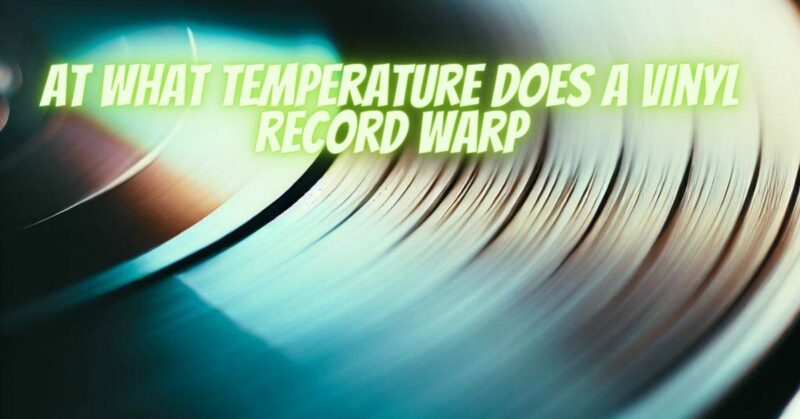Vinyl records are prized possessions for music enthusiasts, and proper storage is essential to preserve their condition and sound quality. One of the primary concerns when it comes to vinyl record storage is temperature. Extreme temperatures can lead to warping, causing the records to become unplayable. In this article, we will explore the temperature threshold at which vinyl records are susceptible to warping and provide insights on how to protect your collection.
Understanding Vinyl Record Warping: Warping occurs when a vinyl record becomes deformed and takes on a curved shape, often resulting in playback issues such as skips or distortion. Warping is primarily caused by exposure to high temperatures, which soften the vinyl material and cause it to lose its shape.
Temperature Threshold for Warping: The exact temperature at which warping occurs can vary based on several factors, including the vinyl composition, the thickness of the record, and the duration of exposure. As a general guideline, vinyl records are susceptible to warping when exposed to temperatures exceeding approximately 140°F (60°C).
Protecting Your Vinyl Records: To safeguard your vinyl records from warping, follow these recommendations:
- Optimal Storage Temperature: Store your vinyl records within the recommended temperature range of 60°F to 70°F (15°C to 21°C). This range provides a stable environment that minimizes the risk of warping.
- Avoid High-Temperature Sources: Keep your vinyl records away from direct heat sources, such as radiators, heating vents, or areas prone to excessive sunlight exposure. Heat from these sources can significantly raise the temperature around the records and increase the risk of warping.
- Climate-Controlled Storage: Consider utilizing a climate-controlled room or storage facility that allows you to regulate and maintain a stable temperature for your vinyl collection. This controlled environment can protect your records from temperature fluctuations that may lead to warping.
- Proper Shelving: Ensure your record storage shelves are not placed against exterior walls or areas that experience extreme temperature variations. Exterior walls can be affected by outdoor temperatures, indirectly impacting the temperature around the stored records.
- Handling and Acclimation: When moving vinyl records between environments with different temperatures, allow them to acclimate gradually. Sudden temperature changes can cause stress on the vinyl material, increasing the risk of warping. Transition records to new environments slowly to minimize the impact of temperature differentials.
- Regular Monitoring: Regularly monitor the temperature in your record storage area using a thermometer. Ensure it remains within the recommended range and make any necessary adjustments to maintain a stable temperature.
- Consideration for Portable Storage: If you transport your vinyl records, avoid leaving them in vehicles during extreme weather conditions. Cars can become extremely hot in the sun, surpassing the temperature threshold for warping.
- Proper Handling: Always handle vinyl records with clean hands, avoiding excessive contact with the playing surface. The warmth from your hands can transfer heat to the record, potentially contributing to warping over time.
Conclusion:
Vinyl record warping is a concern for collectors and music enthusiasts alike. To prevent warping and protect your vinyl collection, it is crucial to store records within the recommended temperature range and avoid exposing them to high temperatures. By following the guidelines mentioned above, including maintaining optimal storage temperature, avoiding high-temperature sources, considering climate-controlled storage, handling records with care, and monitoring temperature levels, you can ensure the longevity and pristine condition of your vinyl records. Enjoy the timeless pleasure of vinyl playback while safeguarding your treasured collection from warping and temperature-related damage.


